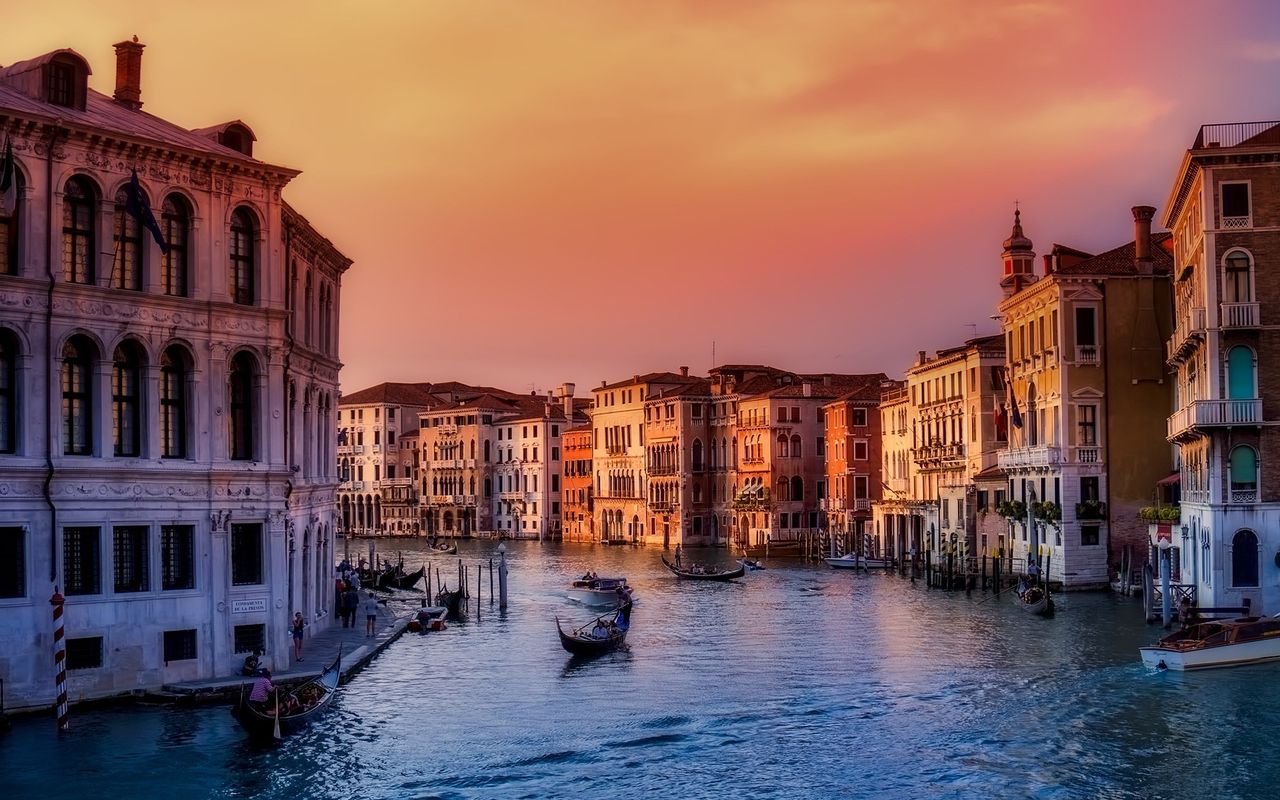Venice Biennale to Spotlight Architects from Africa and the African Diaspora
The 18th edition of Venice Biennale di Architettura, dubbed The Laboratory of the Future, is set to kick off Saturday in the Italian city. This year, for the first time, the event will showcase sustainable designs from architects from Africa and the African diaspora.
Titled Guests of the Future, the exhibition’s theme is decolonization and decarbonization, and will highlight projects that have found architectural solutions for issues ranging from sustainable materials to housing issues to erased histories, according to the Ford Foundation, which, along with Bloomberg Philanthropies, is supporting the architects’ international travel to the event.
“As is the case with many elite gatherings and institutions, access to entry has been high, leaving a diverse pool of talent from displaying their expertise, and we’re hoping this will help open doors for other innovators in architecture and design from all backgrounds well into the future,” the Ford Foundation said in a statement.
This year’s Biennale, which runs through November, is curated by Ghanaian-Scottish architect, professor and novelist Lesley Lokko, who is also the founder of the African Futures Institute, established in Accra, Ghana.
“New technologies continuously appear and disappear giving us unfiltered glimpses of life in parts of the globe we will likely never visit, much less understand,” Lokko said in a statement on the event’s website. “In Europe we speak of minorities and diversity, but the truth is that the West’s minorities are the global majority; diversity is our norm. There is one place on this planet where all these questions of equity, race, hope and fear converge and coalesce. Africa.”
More than 20 projects were selected from across the continent, as well as locations from France to Fez, Morocco—the majority of which were developed by an individual or a team with five people or fewer, according to organizers.
That includes Nzinga Biegueng Mboup, a Senegalese-based architect who worked with Adjaye Associates for three years. She is now collaborating with Elementerre, a construction company specializing in local and 100% recyclable building materials, such raw earth and plants, that require less energy to create and are more suitable for hot climates.
Or the woman-owned, New York City-based Riff Studio. Its three-person team combines backgrounds outside of traditional design practice: building construction, historical research, and architectural pedagogy, respectively. “Our designs are riffs produced from dialogues between these distinct realms, as we contemplate the future of housing,” according to the firm’s website.
There’s also MOE + Art Architecture: a Nigerian firm “that is emerging as one of the leading design houses in Africa for their work to redefine African modernism,” and Cartografia Negra, “a collective based in Brazil that is working to reposition places in Sao Paolo that were used for the execution, sale, torture, and execution of enslaved people,” according to the Ford Foundation.
 Copyright 2020, Dow Jones & Company, Inc. All Rights Reserved Worldwide. LEARN MORE
Copyright 2020, Dow Jones & Company, Inc. All Rights Reserved Worldwide. LEARN MORE
This stylish family home combines a classic palette and finishes with a flexible floorplan
Just 55 minutes from Sydney, make this your creative getaway located in the majestic Hawkesbury region.
As Paris makes its final preparations for the Olympic games, its residents are busy with their own—packing their suitcases, confirming their reservations, and getting out of town.
Worried about the hordes of crowds and overall chaos the Olympics could bring, Parisians are fleeing the city in droves and inundating resort cities around the country. Hotels and holiday rentals in some of France’s most popular vacation destinations—from the French Riviera in the south to the beaches of Normandy in the north—say they are expecting massive crowds this year in advance of the Olympics. The games will run from July 26-Aug. 1.
“It’s already a major holiday season for us, and beyond that, we have the Olympics,” says Stéphane Personeni, general manager of the Lily of the Valley hotel in Saint Tropez. “People began booking early this year.”
Personeni’s hotel typically has no issues filling its rooms each summer—by May of each year, the luxury hotel typically finds itself completely booked out for the months of July and August. But this year, the 53-room hotel began filling up for summer reservations in February.
“We told our regular guests that everything—hotels, apartments, villas—are going to be hard to find this summer,” Personeni says. His neighbours around Saint Tropez say they’re similarly booked up.
As of March, the online marketplace Gens de Confiance (“Trusted People”), saw a 50% increase in reservations from Parisians seeking vacation rentals outside the capital during the Olympics.
Already, August is a popular vacation time for the French. With a minimum of five weeks of vacation mandated by law, many decide to take the entire month off, renting out villas in beachside destinations for longer periods.
But beyond the typical August travel, the Olympics are having a real impact, says Bertille Marchal, a spokesperson for Gens de Confiance.
“We’ve seen nearly three times more reservations for the dates of the Olympics than the following two weeks,” Marchal says. “The increase is definitely linked to the Olympic Games.”

Getty Images
According to the site, the most sought-out vacation destinations are Morbihan and Loire-Atlantique, a seaside region in the northwest; le Var, a coastal area within the southeast of France along the Côte d’Azur; and the island of Corsica in the Mediterranean.
Meanwhile, the Olympics haven’t necessarily been a boon to foreign tourism in the country. Many tourists who might have otherwise come to France are avoiding it this year in favour of other European capitals. In Paris, demand for stays at high-end hotels has collapsed, with bookings down 50% in July compared to last year, according to UMIH Prestige, which represents hotels charging at least €800 ($865) a night for rooms.
Earlier this year, high-end restaurants and concierges said the Olympics might even be an opportunity to score a hard-get-seat at the city’s fine dining.
In the Occitanie region in southwest France, the overall number of reservations this summer hasn’t changed much from last year, says Vincent Gare, president of the regional tourism committee there.
“But looking further at the numbers, we do see an increase in the clientele coming from the Paris region,” Gare told Le Figaro, noting that the increase in reservations has fallen directly on the dates of the Olympic games.
Michel Barré, a retiree living in Paris’s Le Marais neighbourhood, is one of those opting for the beach rather than the opening ceremony. In January, he booked a stay in Normandy for two weeks.
“Even though it’s a major European capital, Paris is still a small city—it’s a massive effort to host all of these events,” Barré says. “The Olympics are going to be a mess.”
More than anything, he just wants some calm after an event-filled summer in Paris, which just before the Olympics experienced the drama of a snap election called by Macron.
“It’s been a hectic summer here,” he says.

AFP via Getty Images
Parisians—Barré included—feel that the city, by over-catering to its tourists, is driving out many residents.
Parts of the Seine—usually one of the most popular summertime hangout spots —have been closed off for weeks as the city installs bleachers and Olympics signage. In certain neighbourhoods, residents will need to scan a QR code with police to access their own apartments. And from the Olympics to Sept. 8, Paris is nearly doubling the price of transit tickets from €2.15 to €4 per ride.
The city’s clear willingness to capitalise on its tourists has motivated some residents to do the same. In March, the number of active Airbnb listings in Paris reached an all-time high as hosts rushed to list their apartments. Listings grew 40% from the same time last year, according to the company.
With their regular clients taking off, Parisian restaurants and merchants are complaining that business is down.
“Are there any Parisians left in Paris?” Alaine Fontaine, president of the restaurant industry association, told the radio station Franceinfo on Sunday. “For the last three weeks, there haven’t been any here.”
Still, for all the talk of those leaving, there are plenty who have decided to stick around.
Jay Swanson, an American expat and YouTuber, can’t imagine leaving during the Olympics—he secured his tickets to see ping pong and volleyball last year. He’s also less concerned about the crowds and road closures than others, having just put together a series of videos explaining how to navigate Paris during the games.
“It’s been 100 years since the Games came to Paris; when else will we get a chance to host the world like this?” Swanson says. “So many Parisians are leaving and tourism is down, so not only will it be quiet but the only people left will be here for a party.”
This stylish family home combines a classic palette and finishes with a flexible floorplan
Just 55 minutes from Sydney, make this your creative getaway located in the majestic Hawkesbury region.






















